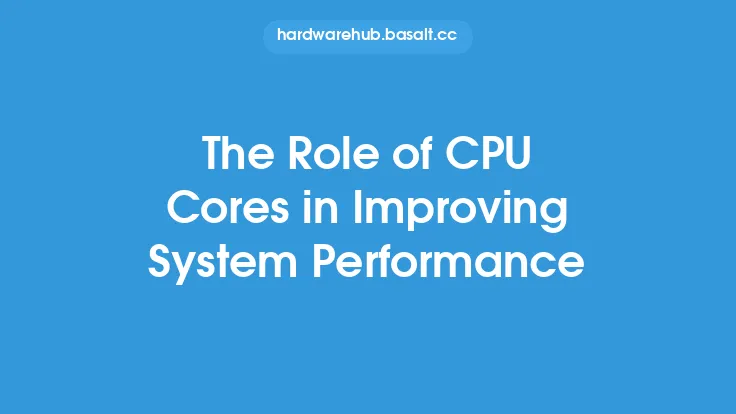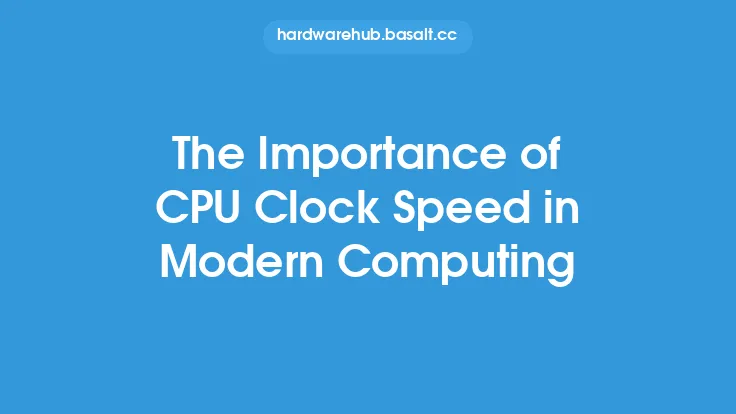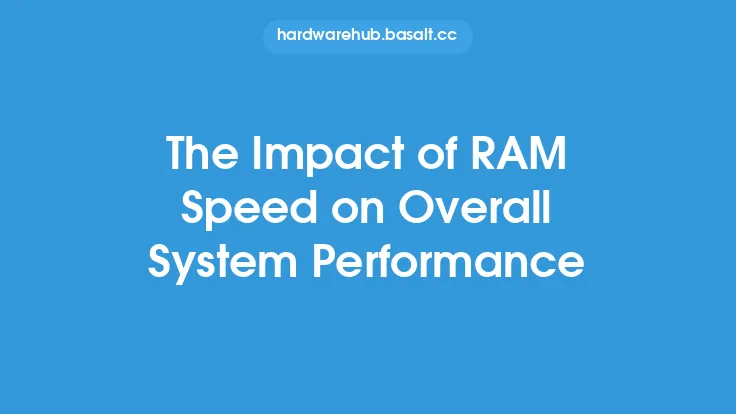When it comes to determining system performance, one of the key factors to consider is the CPU clock speed. The clock speed, measured in GHz (gigahertz), represents how many instructions a CPU can execute per second. A higher clock speed generally indicates better performance, but it's not the only factor to consider. In this article, we'll delve into the role of CPU clock speed in determining system performance, exploring its impact on various aspects of computing.
Introduction to CPU Clock Speed
CPU clock speed is a fundamental concept in computer architecture, and it plays a crucial role in determining system performance. The clock speed is the rate at which the CPU executes instructions, and it's typically measured in GHz. A higher clock speed means the CPU can execute more instructions per second, resulting in better performance. However, it's essential to note that clock speed is just one aspect of CPU performance, and other factors like the number of cores, threads, and cache memory also play a significant role.
How CPU Clock Speed Affects System Performance
The CPU clock speed affects system performance in several ways. Firstly, it determines how quickly the CPU can execute instructions, which in turn affects the overall system responsiveness. A higher clock speed means the system can respond faster to user input, making it feel more responsive and snappy. Secondly, the clock speed impacts the system's ability to handle multitasking and multithreading. A faster CPU can handle more threads and processes simultaneously, making it better suited for tasks like video editing, 3D modeling, and gaming.
CPU Clock Speed and Instruction-Level Parallelism
Instruction-level parallelism (ILP) is a technique used by modern CPUs to improve performance. ILP involves executing multiple instructions in parallel, which can significantly improve system performance. The CPU clock speed plays a crucial role in ILP, as it determines how many instructions can be executed per second. A higher clock speed means the CPU can execute more instructions in parallel, resulting in better performance. However, ILP is also dependent on other factors like the number of execution units, register files, and cache memory.
The Impact of CPU Clock Speed on Power Consumption
The CPU clock speed also has a significant impact on power consumption. A higher clock speed generally results in higher power consumption, which can lead to increased heat generation and reduced battery life in mobile devices. This is because the CPU requires more power to execute instructions at a higher rate. As a result, CPU manufacturers often use techniques like dynamic voltage and frequency scaling (DVFS) to reduce power consumption while maintaining performance.
CPU Clock Speed and Cache Memory
Cache memory is a small, fast memory that stores frequently accessed data. The CPU clock speed has a significant impact on cache memory performance, as it determines how quickly the CPU can access and execute instructions. A higher clock speed means the CPU can access cache memory more quickly, resulting in better performance. However, the cache memory size and hierarchy also play a crucial role in determining system performance.
The Relationship Between CPU Clock Speed and Pipeline Depth
The pipeline depth is the number of stages in the CPU's instruction pipeline. The pipeline depth affects how quickly the CPU can execute instructions, and it's closely related to the CPU clock speed. A higher clock speed generally requires a deeper pipeline to maintain performance, as the CPU needs to execute more instructions per second. However, a deeper pipeline can also increase the branch prediction penalty, which can negatively impact system performance.
CPU Clock Speed and Branch Prediction
Branch prediction is a technique used by modern CPUs to improve performance. The CPU predicts the outcome of a branch instruction, and if the prediction is correct, the CPU can execute the instructions more quickly. The CPU clock speed has a significant impact on branch prediction, as it determines how quickly the CPU can execute instructions and recover from mispredicted branches. A higher clock speed means the CPU can execute more instructions per second, which can improve branch prediction accuracy.
Conclusion
In conclusion, the CPU clock speed plays a crucial role in determining system performance. While it's not the only factor to consider, a higher clock speed generally indicates better performance. However, other factors like the number of cores, threads, and cache memory also play a significant role. As CPU architecture continues to evolve, it's essential to consider the interplay between clock speed and other factors to optimize system performance. By understanding the role of CPU clock speed in determining system performance, users can make informed decisions when selecting a CPU for their specific needs.





